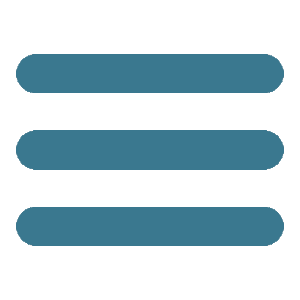 iMatera (Italy), 1997.
iMatera (Italy), 1997.
© George Tatge.
«If a concrete landscape is captured on photographic paper or canvas, men can strive to preserve its image. The image becomes then part of their culture, despite the landscape, as part of the nature, continues evolving after the pure moment of contemplation»
Hansjörg Küster*
The relationship between the landscape and its depiction necessarily implies the filter of culture within which the iconic representation takes life. This highlights a topical issue linked to the relationship between perception and depiction.
We are normally used to allocating an objectifying value to the photographic image with respect to its referent. The preconception related to the photographic image is based upon the nature of the denoted message of the analogon and it evidently enters in resonance with reality. Like any imitative art, photography is in fact the bearer of two messages. The first denoted message is made by the analogon, whereas the second is a connoted message, where the cultural baggage of the society perceiving it rules the attribution of meaning, and consequently, expresses the way of thinking of the community.
In other words, the perception of a photographic image often makes the connotation not very perceivable at message level, as it is strongly deviated by the remarkable fullness of its analogy with the referent. The average spectator acts as recipient and puts to use a series of interpretative strategies that draw on a natural reserve of signs. It is in fact inside Barthes' paradox on the coexistence of a denoted and connoted message in the photographic image that the activity of the author develops. An author that is conscious of the tools at his disposal.
|
|
There is a search for a level that would call into question the bag of interpretative codes and would overturn the connoted value. This search is the base of a vision that wants to detach itself from the interpretative ground zero and allow a small opening on a different perceptive level. Through associations, alignments, and juxtapositions that are incongruous with what daily life makes us perceive as normal, it is possible to deploy subtexts that confine the referent to a symbolic value.
However, the most interesting aspect is the question mark that constantly hovers over the background of the images. We do not ask them to give us an exhaustive answer, but we only ask them to provoke the question. To the spectator, they are a constant invitation to look inside the open glimmer to see what it is to be found beyond it. And the recipient's task is to discover this. The author does not want to find himself in the position of defining a meaning; he wants instead to record the doubt and the absence of certainty that his framing of the so-called real space offers to contemplation. There could not be an answer, but in the end, this is not important; what really count are the potential doubts.
[
Sandro Iovine ]
--------------------------------------------
(*) - Free translation from Hansjörg Küster, Piccola storia del paesaggio. Uomo, mondo, rappresentazione, Donzelli Editore, Rome, 2010; p. 70.
|
iSwimming Pool and Sea, Livorno (Italy), 2010.
© George Tatge.
iWhite Building and Black Car, Siracusa (Italy), 1997.
© George Tatge.
iRoadside Angel, Emilia (Italy), 1998.
© George Tatge.
iCall Immediately, Sardinia (Italy), 1999.
© George Tatge.
iAra Pacis, Rome (Italy), 2007.
© George Tatge.
iTwo Bianchis in a Barn (Italy).
© George Tatge.
iPeeling Wall, Pistoia (Italy), 2007.
© George Tatge.
iBlack Veils, Viterbo (Italy), 2000.
© George Tatge.
v
BEHIND THE SHUTTER CLICK
with George Tatge
George Tatge tells FPmag how the work
Metaphysical Italy was born and has developed, and offers us an interesting opening on his way of working on the field. The video shows only an extract of the long interview, which was given to us by the photographer, however, it will soon be possible to see it in full (news/books).
iPortal, Puglia (Italy), 2000.
© George Tatge.
iIl Cretto by Alberto Burri, Gibellina (Italy), 2001.
© George Tatge.
iFactory on the Sea, Sicily (Italy), 1998.
© George Tatge.
iTemple, Sicily (Italy), 1999.
© George Tatge.
iAbandoned Mine, Sardinia (Italy), 2001.
© George Tatge.
iMud-Filled Church, Garfagnana (Italy), 2004.
© George Tatge.
 George Tatge - Tatge was born in Istanbul in 1951 of an Italian mother and American father. He lived in Europe and in the Middle East most of his youth and studied English Literature at Beloit College in Wisconsin, where he also began photographing under the guidance of the Hungarian photographer Michael Simon. In 1973 he moved to Italy where he worked in Rome as a journalist and then in Todi (Umbria) where he lived for 12 years working as a freelance photographer and writer. His first exhibition in Italy was in 1973 at the Diaframma Gallery in Milan. His first book, Perugia terra vecchia terra nuova, came out in 1984. From 1986 to 2003 he was Director of Photography at the Alinari Archives in Florence, producing photographs in every region of Italy, published in many of their volumes. He has held workshops and exhibitions throughout the world and his photographs can be found in major museum collections in the U.S. and in Europe, such as the Metropolitan Museum of New York, the George Eastman House in Rochester, the Houston Museum of Fine Arts, the Centre Canadien d’Architecture in Montreal, the Helmut Gernsheim Collection in Mannheim, and the Maison Européenne de la Photographie in Paris. His work has been exhibited at the American Academy in Rome (solo) in 1981, at the MASP of Sao Paulo, Brazil in 1988 (solo), at the Venice Biennale (1995), at the Peggy Guggenheim Museum in Venice (2005), at the Reiss-Engelhorn Museum in Mannheim (2003), at the GEH in Rochester (2004), at Rome’s MAXXI (2007), at the Villa Bardini in Florence (2008) and at the Rocca Paolina in Perugia (2010). In 2010 he was awarded the Friuli Venezia Giulia Prize for Photography. He lives in Florence, Italy.
George Tatge - Tatge was born in Istanbul in 1951 of an Italian mother and American father. He lived in Europe and in the Middle East most of his youth and studied English Literature at Beloit College in Wisconsin, where he also began photographing under the guidance of the Hungarian photographer Michael Simon. In 1973 he moved to Italy where he worked in Rome as a journalist and then in Todi (Umbria) where he lived for 12 years working as a freelance photographer and writer. His first exhibition in Italy was in 1973 at the Diaframma Gallery in Milan. His first book, Perugia terra vecchia terra nuova, came out in 1984. From 1986 to 2003 he was Director of Photography at the Alinari Archives in Florence, producing photographs in every region of Italy, published in many of their volumes. He has held workshops and exhibitions throughout the world and his photographs can be found in major museum collections in the U.S. and in Europe, such as the Metropolitan Museum of New York, the George Eastman House in Rochester, the Houston Museum of Fine Arts, the Centre Canadien d’Architecture in Montreal, the Helmut Gernsheim Collection in Mannheim, and the Maison Européenne de la Photographie in Paris. His work has been exhibited at the American Academy in Rome (solo) in 1981, at the MASP of Sao Paulo, Brazil in 1988 (solo), at the Venice Biennale (1995), at the Peggy Guggenheim Museum in Venice (2005), at the Reiss-Engelhorn Museum in Mannheim (2003), at the GEH in Rochester (2004), at Rome’s MAXXI (2007), at the Villa Bardini in Florence (2008) and at the Rocca Paolina in Perugia (2010). In 2010 he was awarded the Friuli Venezia Giulia Prize for Photography. He lives in Florence, Italy.
web site

 home
cover ▼
opinions
news ▼
portfolio
post.it
post.cast
video
ongoing
thematicpaths
googlecards
FPtag
home
cover ▼
opinions
news ▼
portfolio
post.it
post.cast
video
ongoing
thematicpaths
googlecards
FPtag

















 George Tatge - Tatge was born in Istanbul in 1951 of an Italian mother and American father. He lived in Europe and in the Middle East most of his youth and studied English Literature at Beloit College in Wisconsin, where he also began photographing under the guidance of the Hungarian photographer Michael Simon. In 1973 he moved to Italy where he worked in Rome as a journalist and then in Todi (Umbria) where he lived for 12 years working as a freelance photographer and writer. His first exhibition in Italy was in 1973 at the Diaframma Gallery in Milan. His first book, Perugia terra vecchia terra nuova, came out in 1984. From 1986 to 2003 he was Director of Photography at the Alinari Archives in Florence, producing photographs in every region of Italy, published in many of their volumes. He has held workshops and exhibitions throughout the world and his photographs can be found in major museum collections in the U.S. and in Europe, such as the Metropolitan Museum of New York, the George Eastman House in Rochester, the Houston Museum of Fine Arts, the Centre Canadien d’Architecture in Montreal, the Helmut Gernsheim Collection in Mannheim, and the Maison Européenne de la Photographie in Paris. His work has been exhibited at the American Academy in Rome (solo) in 1981, at the MASP of Sao Paulo, Brazil in 1988 (solo), at the Venice Biennale (1995), at the Peggy Guggenheim Museum in Venice (2005), at the Reiss-Engelhorn Museum in Mannheim (2003), at the GEH in Rochester (2004), at Rome’s MAXXI (2007), at the Villa Bardini in Florence (2008) and at the Rocca Paolina in Perugia (2010). In 2010 he was awarded the Friuli Venezia Giulia Prize for Photography. He lives in Florence, Italy.
George Tatge - Tatge was born in Istanbul in 1951 of an Italian mother and American father. He lived in Europe and in the Middle East most of his youth and studied English Literature at Beloit College in Wisconsin, where he also began photographing under the guidance of the Hungarian photographer Michael Simon. In 1973 he moved to Italy where he worked in Rome as a journalist and then in Todi (Umbria) where he lived for 12 years working as a freelance photographer and writer. His first exhibition in Italy was in 1973 at the Diaframma Gallery in Milan. His first book, Perugia terra vecchia terra nuova, came out in 1984. From 1986 to 2003 he was Director of Photography at the Alinari Archives in Florence, producing photographs in every region of Italy, published in many of their volumes. He has held workshops and exhibitions throughout the world and his photographs can be found in major museum collections in the U.S. and in Europe, such as the Metropolitan Museum of New York, the George Eastman House in Rochester, the Houston Museum of Fine Arts, the Centre Canadien d’Architecture in Montreal, the Helmut Gernsheim Collection in Mannheim, and the Maison Européenne de la Photographie in Paris. His work has been exhibited at the American Academy in Rome (solo) in 1981, at the MASP of Sao Paulo, Brazil in 1988 (solo), at the Venice Biennale (1995), at the Peggy Guggenheim Museum in Venice (2005), at the Reiss-Engelhorn Museum in Mannheim (2003), at the GEH in Rochester (2004), at Rome’s MAXXI (2007), at the Villa Bardini in Florence (2008) and at the Rocca Paolina in Perugia (2010). In 2010 he was awarded the Friuli Venezia Giulia Prize for Photography. He lives in Florence, Italy.